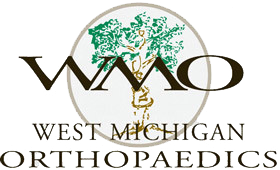Shoulder injuries can occur due to trauma, like a collision or fall, repetitive use, or degeneration due to age. Two common categories of shoulder injury include instability and tears.
Instability
Instability refers to looseness of the “ball and socket” joint, known as the glenohumeral (GH) joint. The humeral head, or “ball” of the joint, may have too much motion toward the front, back, top or bottom of the glenoid, or socket.
GH instability may be caused by an acute or chronic injury. There may be damage to the ligaments, labrum, rotator cuff or capsule surrounding the shoulder joint. Genetic diseases like Ehlers Danlos Syndrome and Marfan Syndrome are also known to cause instability.
Instability results in pain and inflammation in the affected area, as well as a feeling of “looseness,” as though the joint may pop out of the socket. Weakness of the affected shoulder may also occur, in addition to a grinding or clicking sensation.
Shoulder instability is diagnosed with a shoulder exam performed by your physician. An X-ray, CT scan or MRI may also be necessary depending on the cause of the instability.
Treatment will depend on the cause of your shoulder instability. Physical therapy is used to strengthen the muscles surrounding the shoulder and provide greater support for the joint. Patients who find physical therapy does not relieve their symptoms may require surgery. Arthroscopy is a minimally-invasive option to treat certain conditions, while an open incision may be necessary for other shoulder problems.
Labral Tear
The labrum is a soft piece of cartilage that cushions the shoulder joint. A tear can occur at any point of the socket and can be caused by acute injuries like shoulder dislocations, or chronic, repeated stresses to the joint. Athletes in certain sports like baseball or volleyball are susceptible to labrum injuries.
Symptoms can vary based on the area in which the tissue is torn. Pain in the shoulder or bicep, weakness of the affected shoulder, or a clicking sensation can all occur depending on where and how the injury occurred.
We can diagnose a labral tear through examination and an X-ray or MRI scan.
Labral tears can be treated non-surgically or surgically depending on the patient’s situation and the severity of the injury. Non-athletes and older patients can do well with physical therapy, anti-inflammatory medications, cryotherapy, injections or activity modification. In athletes, or patients who do not respond to non-surgical methods, a minimally-invasive arthroscopy may be used to repair or reattach the affected tissue.
Rotator Cuff Tear
The rotator cuff is a group of four muscles surrounding the shoulder joint. It is responsible for most of the shoulder joint’s movement. Rotator cuff tears can occur due to acute injury, impingement syndrome (if left untreated), repetitive overhead activities or degeneration in older populations.
Rotator cuff tears can be painful, especially on the side of the shoulder and at night. Loss of motion or strength in specific planes of motion can also occur depending on the location and severity of the tear. A large tear may cause a patient to lose motion in the affected shoulder. Pain can also radiate up to the neck.
We can diagnose a rotator cuff tear by examining your range of motion, pain level and amount of weakness in the shoulder. An X-ray or MRI may also be necessary.
Small or partial tears of the rotator cuff can be treated non-surgically. Physical therapy, anti-inflammatory medications, cryotherapy, injections or activity modification may be necessary. Patients who do not respond to non-surgical treatment can be treated surgically. Rotator cuff tears can be treated with a minimally-invasive arthroscopic procedure to repair partial tears, or reattach tendons that have detached from the bone. After surgery, a sling is used to allow the joint to heal. Physical therapy is also used to regain strength and flexibility.
If repair of the soft tissue is not possible, your physician may recommend a reverse total shoulder replacement for pain relief and restoration of motion.


